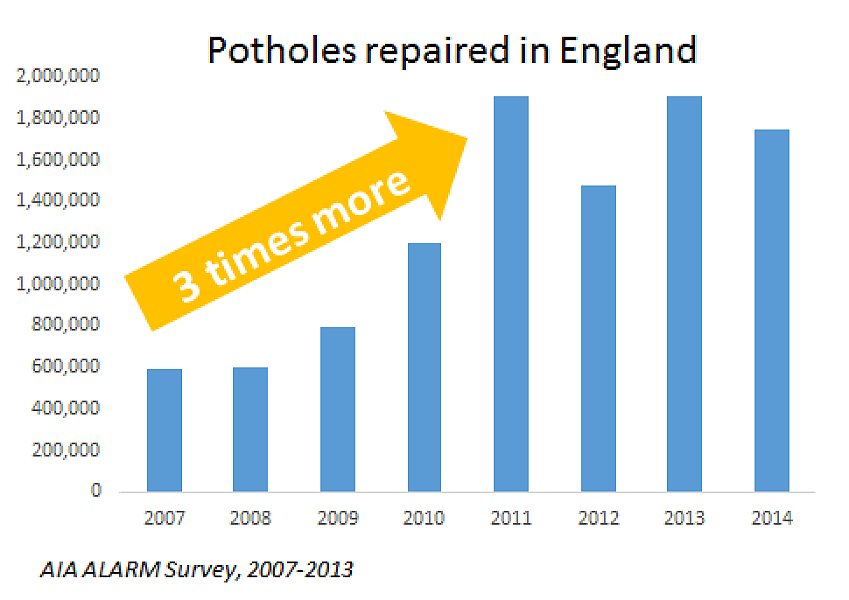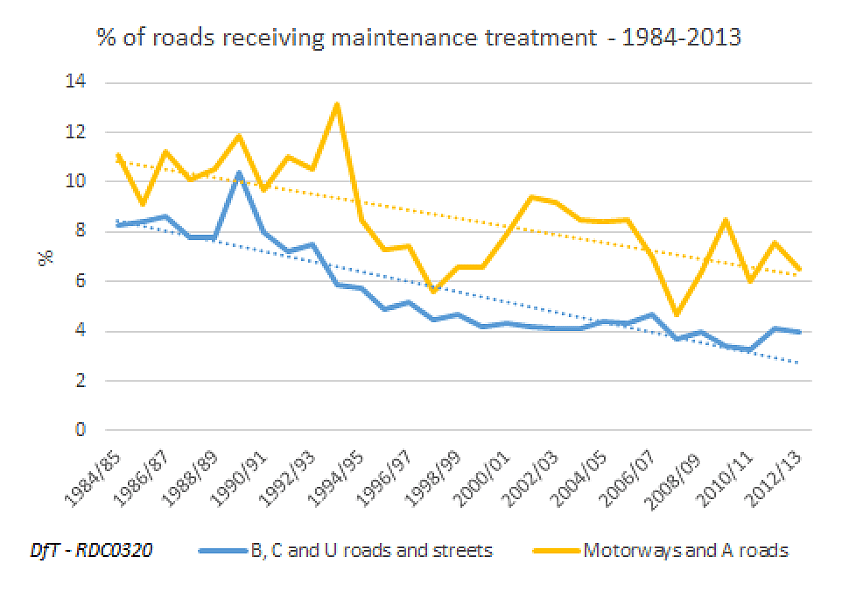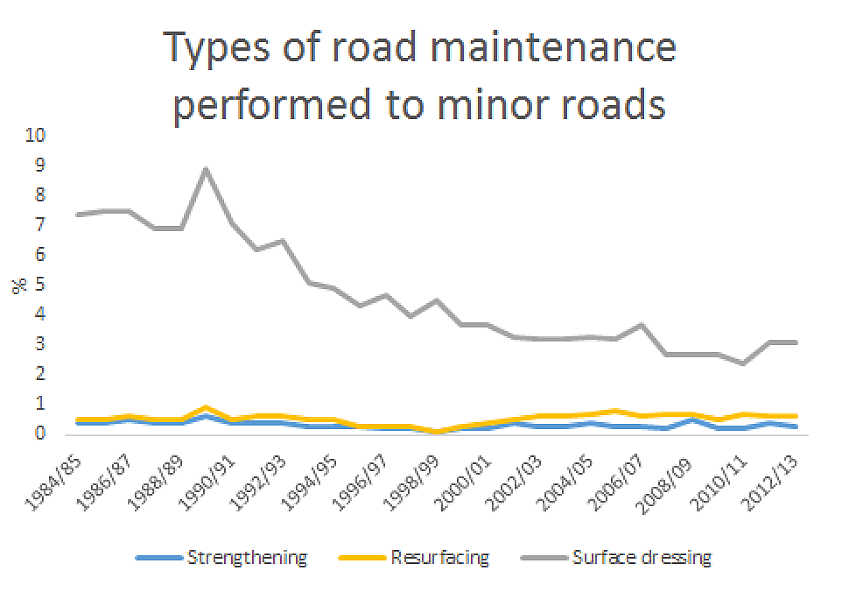
Why our roads are in such a bad state
Why our roads are in such a bad state
Potholes are dangerous, even lethal, for people on bikes.
But fixing potholes is a huge waste of resources: each pothole costs over £50 to mend, and the number of potholes has massively increased in recent years.
Meanwhile, that pothole is often a symptom of an underlying structural weakness in the road, or a failure to keep water out of the surface.
Data collected by the Asphalt Industry Alliance from local authorities has shown an over threefold increase in potholes, from 589,000 in 2007 to 1.9m in 2013. A quarter of all the expenditure on road maintenance goes on filling potholes, rather than sealing or resurfacing roads to prevent potholes forming in the future.
A properly resurfaced road means a more comfortable, safer ride for cycling on, but it also offers the potential to rethink the layout of the road and consider whether space for cycling can be created, or even, more simply, whether the current layout of lines and road markings are necessary. For instance, on many roads, removing the centre line can reduce motor traffic speeds, and may increase the distance overtaking drivers give to people on bikes (forthcoming publication).
In part the increase in potholes was due to the very harsh winters of 2009-2011, which in some parts of the country were the most severe periods of snow and cold in decades.
However, that was only part of the problem: the cold weather needn't have done so much damage if the roads had been better maintained.
The main reason lies further back: years of under investment and failure to treat and properly maintain roads. The following graph shows that the proportion of roads that received some form of treatment - normally surface dressing - dropped from over 10% of minor roads in 1991 to just 4% in 2013. In other words: back then over 15,000 miles of minor roads were treated in England each year; now it's just over 6,600 miles.
Furthermore, the usual form of maintenance is surface dressing. You'll know this as the piles of gravel that suddenly appear on a sticky layer of gravel on country lanes in the summer.
If laid incorrectly, or on rough surfaces, this leads to a terrible cycling surface, with loose chips at first, and a bumpy, harsh ride for the next few years. CTC would much prefer roads to be fully resurfaced, but, as this costs almost 9 times as much as dressing, it is understandable that local authorities, with tight budgets, resort to this method to waterproof the roads and improve skid resistance.
Many people complain about surface dressing, but even this approach is used less than half as frequently as it used to. I agree that surface dressing is awful, but if it prevents potholes forming (which it will only do if laid correctly), then it's probably worth doing, for both safety and fiscal reasons, even if ride quality suffers.
To bring our road network - particularly the minor roads where most cycling takes place - up to standard local authorities will need billions more to be able to properly resurface the lanes and streets.
In the meantime, it's still worth reporting potholes and ensuring that the most dangerous ones are brought to the attention of your local authority.












Comments
The article highlights a
The article highlights a major problem, but a bit of 'background' to pothole formation is useful:
Potholes are created in 2 main ways: by ice and by water. Ice (freezing temperatures) forming in small cracks will widen those cracks since water expands when it freezes. Repeated action makes the cracks larger and larger. The passage of vehicles disturbs the broken surface and holes start. The second mechanism which has been more significant in wet weather is when vehicles drive over water which gets forced into cracks which relatively quickly widen and cause the surface to break up. The hydraulic forces caused by a heavy vehicle driving over a puddle should not be under-estimated: basically they are enormous.
This is why I despair at the lack of maintenance by the road authorities. It's generally the cracks that they need to focus on, because that's where the first potholes will appear. Simply filling the cracks with hot tar, or other sealant, would give major savings. What does it cost to deploy a small maintenance team with 'crack filling' equipment and left to get on with the job in their area, compared (as the article correctly illustrates) the huge cost of fixing potholes afterwards?
Really good points. You do
Really good points.
You do see this in some countries. I've heard it said that one of the reasons that cracks aren't sealed is that that sealing material has very poor skid resistance, and so is dangerous for cyclists/motorcyclists, even if just a few cms wide. Not sure whether this is accurate though.
This is true, on the
This is true, on the continent you see a lot more tar sealed cracks everywhere. Probably because they appreciate it is best to act sooner than leave it and do a bigger job as we do here. If I remember correctly the strip should be no more than 1.5cm wide but rarely is this done accurately and yes it is very slippy for anyone on two wheels. I would have thought something could be done such as adding grit to it to make it better grip after all manholes as sometimes have this on top so why not overbanding?